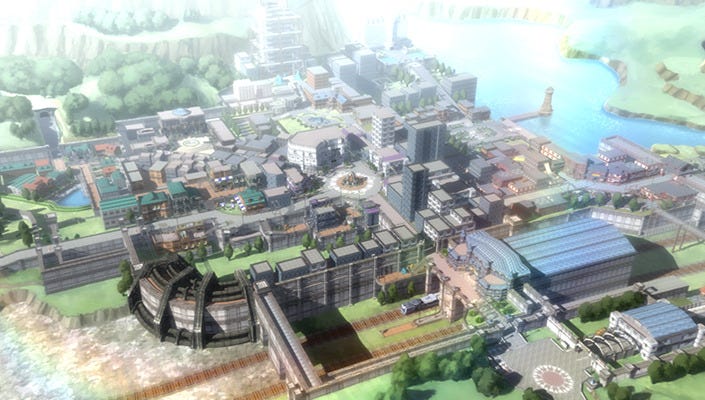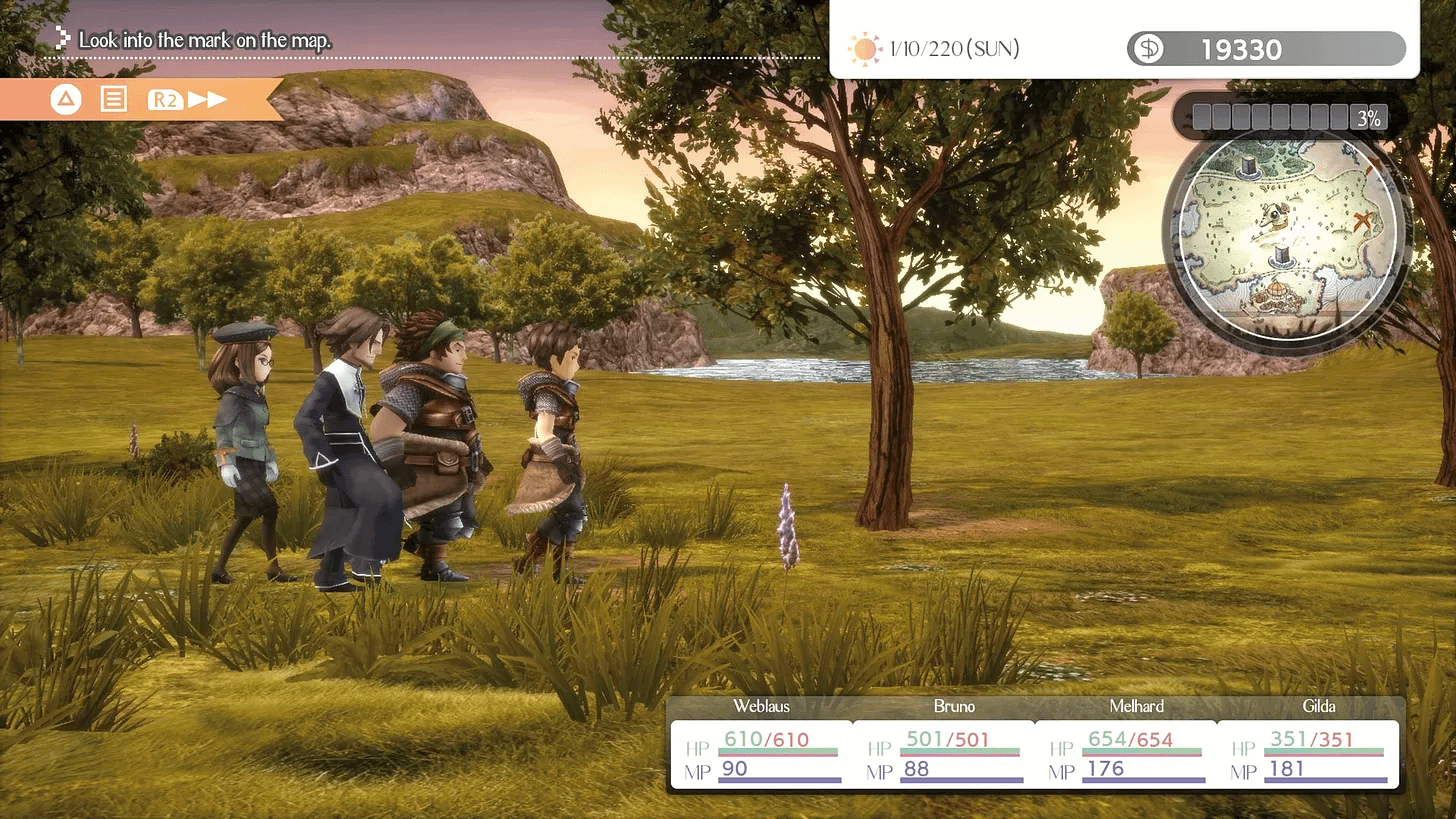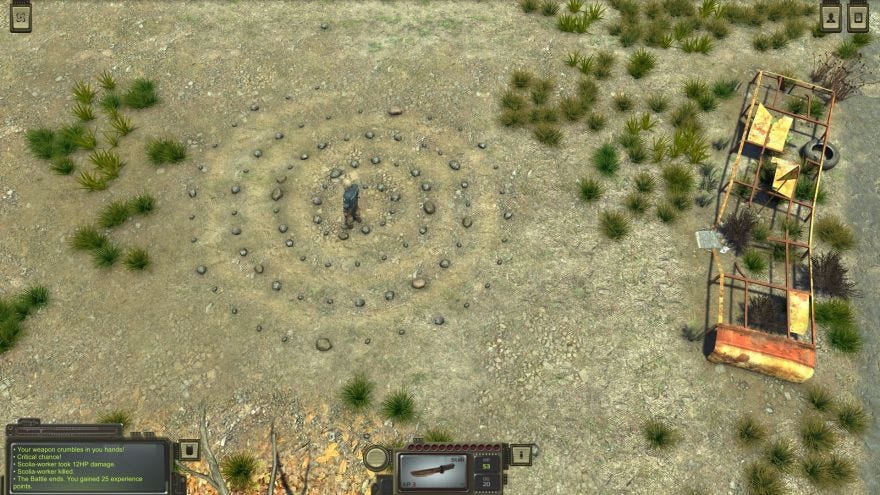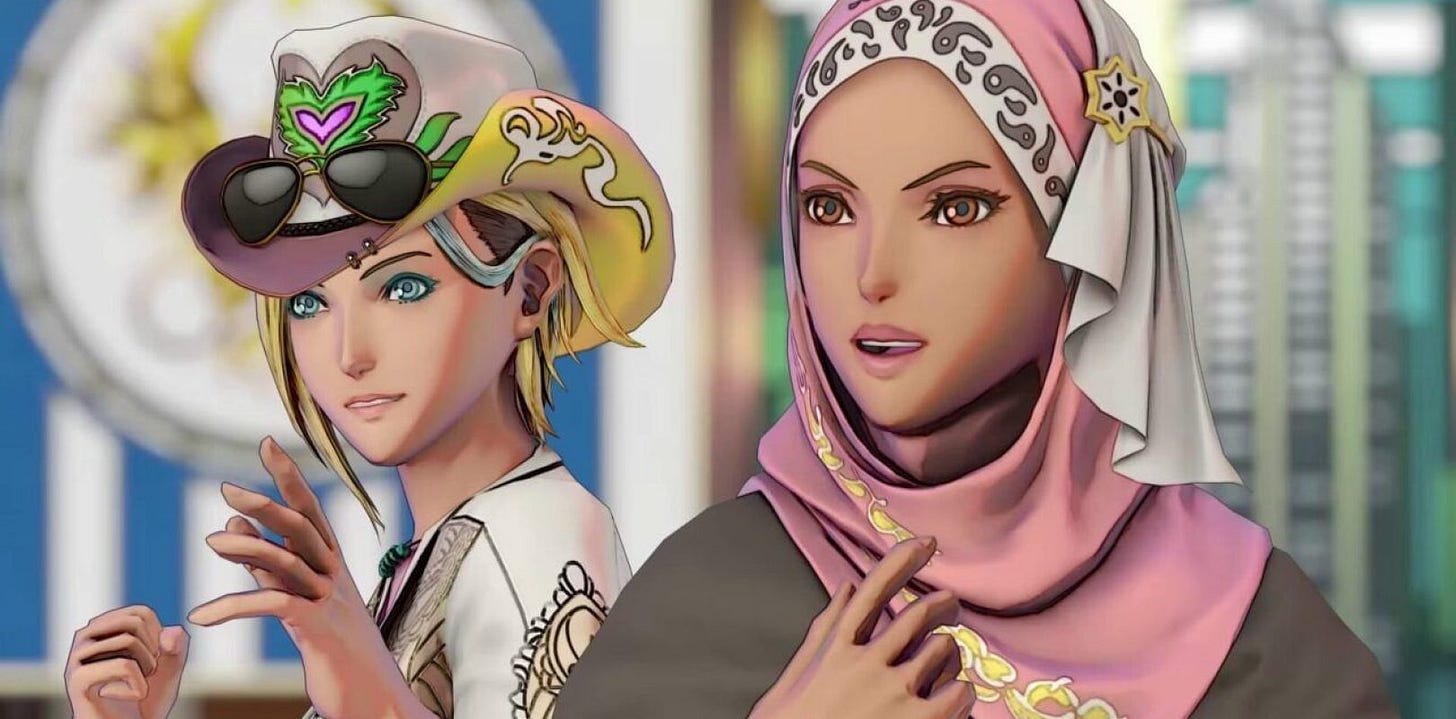My RPG 2024 roundup, from Crossbell and the post-Soviet wastelands to Midgard, Fevrith and Kiersau
![📖 Let's Read! - [Let's Read] Dragonlance: War of the Lance | Dungeons & Dragons / Fantasy D20 Spotlight | Page 3 | RPGnet Forums 📖 Let's Read! - [Let's Read] Dragonlance: War of the Lance | Dungeons & Dragons / Fantasy D20 Spotlight | Page 3 | RPGnet Forums](https://substackcdn.com/image/fetch/$s_!5v7Y!,w_1456,c_limit,f_auto,q_auto:good,fl_progressive:steep/https%3A%2F%2Fsubstack-post-media.s3.amazonaws.com%2Fpublic%2Fimages%2F4298cff9-188e-45da-85c0-8dcef450948e_994x771.jpeg)
Happy new year to the readers of this tiny little corner of the web! Having kicked off this blog last September, it has been just four months since I went back to systematically review videogame RPGs, and yet I’ve been having a lot of fun in choosing which titles to tackle and reminiscing about how I felt about their systems and narrative when I originally played them, not to mention researching their development history.
I want to give my heartfelt thanks to everyone who enjoyed my articles so far, as long-winded and full of tangents as they may be. This is also a good time to revisit 2024 through the lens of my own videogame RPG consumption.
The last few months of 2023 saw me completing Disco Elysium and Trails to Zero, an unlikely duo of cop stories set in wildly different universes that managed to fully capture me, not to mention Fire Emblem Engage, Final Fantasy XVI and others, but my plans for the first few months of 2024 were already set: I would finally go back to Trails for good, after putting that franchise on hyatus back in September 2016 when I completed Cold Steel 2, which soured me a bit on a franchise I had absolutely loved till that moment. While I did greatly enjoy The 3rd a year after that, the long wait for Zero and Azure, mixed with my misgivings about the Erebonian arc, made me wait quite a long while before finally deciding to go back to beloved Zemuria.
-THE GREAT TRAILS MARATHON (JANUARY-EARLY JUNE)
Given how I wanted to spice things up for this long-awaited marathon and had a pretty good idea of Zemuria’s chronology since long before, I decided to play the Crossbell and Erebonian arc concurrently, starting with Zero, continuing with Cold Steel, and then playing Cold Steel’s last few chapters intermingled with Azure, ultimately alternating it with Cold Steel 2. I had a lot of fun doing this, not just because the Crossbell and Erebonian story arcs reference each other in pretty interesting ways, but also because I could better appreciate the care in which some plot details were crafted in order to make everything work in the series’ overall narrative. In the end, I played those three games from December 2023 to June 2024, alternating them with a number of other titles and treating them as a single, huge project.

-TO ASANO’S NEW WORLD! (JANUARY)
Speaking of side games, January saw me finally giving a chance to Various Daylife, the port of Asano and DokiDoki’s Apple Arcade side-scrolling, simulation-centered turn based JRPG centered upon an expanding colony in a freshly discovered, mysterious continent. The game managed to surprise me a bit for some of its narrative twists (one of which frankly left me dumbfounded for how daring and connected with the game’s own loop it was, even if lacking in proper foreshadowing), the unepxected amount of care for its characters’ backstories and for its interesting combat system, even if I felt treating it as a side project instead of the main focus likely made me enjoy it much more, considering how monotonous it could get at times.

-A POST-SOVIET FALLOUT (FEBRUARY)
After giving a try to Grandblue Relink’s demo, which I didn’t particularly appreciate despite being a huge action-JRPG buff, possibly because I felt it was a bit too skewed on its quest and multiplayer elements, February saw me going back to WRPGs with Atom RPG, a post-Soviet Fallout-inspired game developed by a mixed Ukrainian, Russian and Latvian team that ended up being a true throwback to Interplay’s classics, albeit with its own set of issues. I lost myself epxloring its world and had a great time with its bizarre characters and lore, even if the final stretch did require some extensive looting (sorry fellow Atom soldiers-comrades, the interest of post-atomic proletariat demanded your grenades!) in order to avoid being utterly obliterated.

-PERSONA 5 STRIKES BACK (FEBRUARY-MID MARCH)
Concurrently with Atom RPG and the Trails marathon, I also started Persona 5 Strikers, which I completed before mid March and ended up enjoying more than I thought considering I hadn’t enjoyed most of the Persona spinoffs released in the past decade, possibly due to its very un-Persona structure, not just because of its hack&slash gameplay, betraying its Koei-outsourced development, but also for its heavy focus on travelling to a variety of Japanese cities, its lack of emphasis on calendar management and social links and, last but not least, Zenkichi Hasegawa, a character I felt really stole the show and made the game much more interesting, not just because of his age, but also for his peculiar attitude and for the way his role as a father impacted his story. It’s a shame he’s unlikely to ever resurface, given his debut in a spinoff entry that wasn’t particularly successful, but still he has my gratitude for making my latest meeting with the Phantom Thieves more heartfelt than I expected.
-A ROGUELITE INTERLUDE: SKUL AND ROGUE LEGACY 2 (APRIL-MAY)
After spending much of March in Zemuria, I started Korean action-roguelite Skul, which provided a nice counterpoint to the events of Crossbell’s West Zemuria Trade Conference arc (played concurrently with Cold Steel’s visit to Garrelia). After finally completing Skul’s nice anti-heroic adventure, feeling that its kind of title was very well suited as a companion game to my bigger project, I started Rogue Legacy 2, which lasted me till the 20th of May, when I was finally approaching Trails to Azure’s final chapters and Cold Steel 2’s concurrent events. While I liked Rogue Legacy 2, I honestly didn’t feel it was such a major improvement compared to the first entry, which I had admittedly played almost a decade ago.
-TRAILS TO DIVERTISSEMENT (MID JUNE)
June saw me finally completing Trails to Azure, which was soon followed by Cold Steel 2 a week later. Re-experiencing Trails of Cold Steel 2’s Divertissement and ending (aside for that last dungeon, I mean) just after beating Azure made for a very different experience compared to when I first tackled the game, which also explains why I ended up liking it a bit more despite still having a long list of issues with the way it portrayed the Erebonian Civil War and its factions. While back in 2016 I already had a pretty good picture of what was happening in Crossbell, as I expected CS2’s last stretch did end up landing very differently once I directly experienced Lloyd’s struggles and was able to properly empathize with Crossbell’s denizens.
Crossbell itself became almost a second home during those months of Zemurian meanderings, a true nexus of different lives, stories and intrigues where each building had meaning and memories instead of just some random hub like far too many JRPG cities, including some in which you have to spend quite a bit of time.
While I tried to immediately tackle Cold Steel 3 after completing the previous entry, after a few hours I felt I had to leave Zemuria for a while before continuing the Erebonian arc, and I ended up playing a bit of Interplay’s Darklands, which I revisit once in a while, followed by sampling Atlus’ Atelier-style Nora and the Time Studio on Nintendo DS, Xuan Yuan Sword 3’s Steam version and finally committing to Samurai Warriors 5, the first proper Musou game I played in a while, which I did enjoy for its stronger focus on Oda Nobunaga and Mitsuhide Akechi’s struggles over a long period of time, and ended up playing intermittently until I completed it in August.
-SAMURAI WARRIORS 5 (LATE JUNE, COMPLETED IN AUGUST)
After appreciating Samurai Warriors: Sanada’s Spirit back in 2017, not to mention Fire Emblem Warriors: Three Hopes, I feel the series can be retooled to convey more story-driven, RPG-oriented experiences, with Samurai Warriors 5 being a bit less daring since it’s still very much a traditional Warriors title, despite offering a more cohesive tale, even if that was balanced by the reduced roster and the way many of its characters were relegated to side-stories. As for Akechi Mitsuhide’s scenario, while I appreciated the added details it was able to provide, it ended up being a bit redundant after completing Nobunaga’s. Considering the way SW5 was set up, I wonder if SW6 will return to a less detailed tale of the Sengoku era or if it will end up following a similar outline by focusing on, say, Hideyoshi’s rise to power after the Honnouji Incident, a period they already kinda explored with SW4 and 4-2, albeit with a different focus compared to the heavily character-driven style pioneered in Sanada and SW5.
-ADRIFT IN BATEN KAITOS (JULY AND EARLY AUGUST)
Having to put Samurai Warriors 5 on hyatus during my summer vacation, I planned to exploit Switch’s portable nature to replay the Baten Kaitos series while I was away from home. Thus, July saw me enjoying Baten Kaitos Origin, soon followed by Baten Kaitos since, same as with Trails, I opted to make things more interesting by playing them in chronological order rather than in release order, which made some parts more interesting and poignant, like with Savyna and Geldoblame’s rather traumatic character growth and the fate of Melodia’s parents, which stings way more when you have just completed their journey. Compared to when I first tackled them, playing both Baten Kaitos back to back, I appreciated even more how the games tried to explore different areas in each floating island, instead of having you backtrack the same dungeons in both games, as other titles would have done. That said, the Malpercio plotline and the way it was handled between the two games, while interesting, ended up working a bit less by playing in this order since some of Origin’s revelations didn’t really work that well with the way things were presented in the original. Also, despite recognizing how Origin made the Magnus card system more interesting in some regards, I must admit I still prefer the way it was handled in the original, especially in combat with its separate character decks.
-VALKYRIE PROFILE, FROM LENNETH TO ELYSIUM (SEPTEMBER)
Just after this, I ended up playing the first two Chapters of Xenoblade 3, which I decided to put off for now since the game wasn’t able to keep up with its incredibly strong start. I also tackled Vision of Mana’s demo and, despite feeling its combat was a bit floaty and clunky, I really liked its world and overall atmosphere, ending up buying the game later. September, however, was the month of Valkyrie Profile: since I finally decided to open up my copy of Valkyrie Elysium, which I had bought a year before, before starting it I replayed Valkyrie Profile: Lenneth, which I hadn’t enjoyed in a decade or so. Given how much I love that game, I wasn’t surprised to still enjoy it as much as I did when I first found its import PS1 US version in a long-closed videogame shop in my city, back in early 2000, even if I admit the PS4 port’s rewind and save state features were a nice help when dealing with some of the dungeons’ platforming. This new playthrough was made even funnier due to my daughter taking an interest in Lenneth and the Einherjars she ended up recruiting. The charm of Valkyrie Profile's spriteworks truly seems to transcend generations.
As for Valkyrie Elysium, which I started immediately after seeing Lenneth’s true ending, it’s a game I’m grateful to have played with lowered expectations, knowing full well what I was getting into. Once you understand you have to deal with a low budget game with a very heavy focus on its action scenarios, no NPCs or explorations aside from four Einherjars and the small Valhallan hub, something akin to Dragon Valor, Chaos Legion and other action-driven JRPG experiences such as those rather than more balanced action JRPG experiences like Ys, Mana, Tales or Star Ocean, Elysium was fairly enjoyable in its own right even if, like most of Square Enix’s late 2022 flurry of releases (The DioField Chronicle being another example, for instance), devoting a bit more time and resources to its development would have likely resulted in a far better overall experience.
-VANILLAWARE, WITH A SPRINKLE OF DANMAKU (OCTOBER)
Literally the day after completing Elysium, it was finally time to delve into Vanillaware’s Unicorn Overlord, a game that, as someone who loved squad-based real-time tactical JRPGs since the days of Matsuno’s Ogre Battle and, more recently, Yamamoto’s excellent Soul Nomad, was an absolute joy to behold not just because of its absolutely incredible art direction, but also for its rich customization options, even if its battle maps took a bit to get really interesting. This is a game where I ended up going for the higher difficulties available just because I wanted to put my formations to the test without having all of them being almost equally effective, with my younger son as an advisor, even if one with a rather obvious bias for valiant knights.
Sequence breaking the game a bit by going to Bastorias when I was just starting my Elfheim campaign also made for a nice challenge, initially a bit overwhelming but actually more manageable than I thought. I took my sweet time with Unicorn Overlord, not just because I ended up doing pretty much every single piece of content available, but also because I ended up choosing a notoriously time consuming title as its side game, Vampire Survivor. After seeing Alain’s war to its end at the end of October, I dived into its danmaku-roguelike-RPG hybrid formula for another tenday, just in time to enjoy its wonderful Castlevania-themed DLC.
-BACK TO THE HOLY ROMAN EMPIRE (NOVEMBER)
Having completed most of Vampire Survivor’s contents, I felt like I needed a calmer pursuit, and went for a WRPG I was saving for just a time such as this, Obsidian’s Pentiment, an adventure game-RPG hybrid that mixed its Holy Roman Empire setting (which has been exceedingly lucky in terms of WRPGs, considering Darklands and Kingdom Come) with a very interesting story inspired by Umberto Eco’s Il nome della rosa, with plenty of historical, theological and literary references and a gorgeous art direction directly inspired by medieval manuscript art, tied with the profession of the protagonist himself. Despite having some qualms with the way the game handled some of its events, especially the end of its second Act, Pentiment was a very refreshing title that shows how RPGs, rather than trying to adhere to some arbitrary, restrictive definition, should adapt to their creators’ own uncompromising vision and boldly mix different subgenres and gameplay styles.
-KIRYU, KAWAZU AND A SURPRISE FROM FRANCE (DECEMBER)
Just to show how incredibly varied the RPG family can be, after completing Pentiment in late November, a month in which unfortunately I had precious little time for entertainment, December saw me tackling three very different JRPGs. At first I delved into Like a Dragon Gaiden, which I appreciated much more than I thought because of the very focused experience it was able to offer and, needless to say, because of Kiryu, whose complex situation was explored in a very compelling way, not just as a tool to bridge the events of Yakuza 6 with those of Ichiban’s two games but also to provide some much-needed closure in terms of characterization, which ended up making him an even stronger character. Also, the Agent style with its contraptions was so absurd and out of character, albeit in a funny way, it made me chuckle throughout the whole game while I was swarming poor criminals and Omi Alliance soldiers with tiny drones or smoking them with explosive cigarettes.
After Kiryu’s own detour, I started SaGa Emerald Beyond, completing Ameya and Bonnie and Formina’s scenarios while also playing part of Mido’s. While its timeline-based combat was magnificent and I did appreciate the board-game style of its quests and the sheer variety of its worlds, I admit that overall I didn’t enjoy it as much as I did with Scarlet Grace, possibly because that game’s setting and the way its regions were actually interconnected, instead of locking you in until you solve their quest like Emerald Beyond’s different planes whose history is often rather gimmicky (my mind went back to Moorcock’s Elric and Corum, when they visited one-off worlds to pick up some Mc Guffin during their own conflict against Chaos, soon leaving them behind), felt much more organic and interesting to me. That said, I think I’m still missing lots of what Emerald Beyond has to offer, and I plan to revisit it later to tackle Siugnas’ scenario.

In the last week of December, I was taken by surprise by Terra Memoria, a J-inspired French turn based RPG inspired by Breath of Fire and Dark Cloud I discovered thanks to a fellow r\JRPG user. Being rather short, I was able to complete it before the end of 2024, feeling it was an aestethically gorgeous game (surprisingly so in fact, especially considering how many indie developers go for a retro art direction that has actually little to do with how JRPGs looked back in the SNES and PS1\Saturn days and how people expected that aesthetic to evolve back then) with a nice, if unambitious, story, an appreciable lack of padding and a good combat system which made an extensive use of its timeline features, right after Emerald Beyond served me a masterclass in that regard. Unfortunately, its lack of challenge did hamper my enjoyment a bit, but overall it was a funny, pleasant experience that didn’t overstay its welcome and ended up being true to its cozy marketing.
After seeing Terra Memoria’s ending credits, I still had time to finally start Like a Dragon: Infinite Wealth, which will likely take some time to complete.
As for 2025, aside from enjoying Ichiban’s Hawaii trip, I already managed to complete a JRPG by finally going back to Rogue Hearts Dungeon, a roguelike PS2 game by Compile Heart and Kunio-Kun legend Yoshihisa Kishimotos’s Plophet I had put on hyatus back in 2023, which kind of blindsided me since I didn’t even realize I was in the last dungeon until the story abruptly ended. But this, as they say, is another story.














